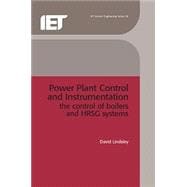
| Preface | p. ix |
| Diagrammatic symbols | p. xiii |
| Abbreviations and terms used in this book | p. xv |
| The basics of steam generation and use | p. 1 |
| Why an understanding of steam is needed | p. 1 |
| Boiling: the change of state from water to steam | p. 2 |
| The nature of steam | p. 4 |
| Thermal efficiency | p. 9 |
| The gas turbine and combined-cycle plants | p. 10 |
| Summary | p. 12 |
| The steam and water circuits | p. 13 |
| Steam generation and use | p. 13 |
| The steam turbine | p. 15 |
| The condensate and feed-water system | p. 17 |
| The feed pumps and valves | p. 21 |
| The water and steam circuits of HRSG plant | p. 21 |
| Summary | p. 23 |
| The fuel, air and flue-gas circuits | p. 25 |
| The furnace | p. 25 |
| The air and gas circuits | p. 27 |
| Fuel systems | p. 35 |
| Igniter systems | p. 44 |
| Burner-management systems | p. 45 |
| Gas turbines in combined-cycle applications | p. 46 |
| Summary | p. 46 |
| Setting the demand for the steam generator | p. 49 |
| Nature of the demand | p. 49 |
| Setting the demand in power-station applications | p. 50 |
| The master demand in a power-station application | p. 53 |
| Load demand in combined heat and power plants | p. 59 |
| Waste-to-energy plants | p. 60 |
| Summary | p. 61 |
| Combustion and draught control | p. 63 |
| The principles of combustion control | p. 64 |
| Working with multiple fuels | p. 79 |
| The control of coal mills | p. 81 |
| Draught control | p. 91 |
| Binary control of the combustion system | p. 95 |
| Summary | p. 100 |
| Feed-water control and instrumentation | p. 103 |
| The principles of feed-water control | p. 103 |
| One, two and three-element control | p. 103 |
| Measuring and displaying the drum level | p. 112 |
| The mechanisms used for feed-water control | p. 121 |
| Pumps | p. 127 |
| De-aerator control | p. 131 |
| Summary | p. 134 |
| Steam-temperature control | p. 135 |
| Why steam-temperature control is needed | p. 135 |
| The spray-water attemperator | p. 136 |
| Temperature control with tilting burners | p. 150 |
| Controlling the temperature of reheated steam | p. 151 |
| Gas recycling | p. 152 |
| Summary | p. 152 |
| Control equipment practice | p. 153 |
| A typical DCS configuration | p. 153 |
| Interconnections between the systems | p. 157 |
| Equipment selection and environment | p. 158 |
| Mechanical factors and ergonomics | p. 159 |
| Electrical actuators | p. 168 |
| Hydraulic actuators | p. 168 |
| Cabling | p. 169 |
| Electromagnetic compatibility | p. 169 |
| Reliability of Systems | p. 172 |
| Summary | p. 180 |
| Requirements definition and equipment nomenclature | p. 183 |
| Overview | p. 183 |
| Defining the requirements | p. 183 |
| The KKS equipment identification system | p. 186 |
| Summary | p. 195 |
| Upgrading and refurbishing systems | p. 197 |
| The reasons behind the changes | p. 198 |
| Living with change | p. 199 |
| Making the decision to change | p. 201 |
| A refurbishment case study | p. 202 |
| Why refurbish? | p. 204 |
| Documenting the present system configuration | p. 205 |
| Summary | p. 205 |
| Further reading | p. 209 |
| Index | p. 213 |
| Table of Contents provided by Syndetics. All Rights Reserved. |
The New copy of this book will include any supplemental materials advertised. Please check the title of the book to determine if it should include any access cards, study guides, lab manuals, CDs, etc.
The Used, Rental and eBook copies of this book are not guaranteed to include any supplemental materials. Typically, only the book itself is included. This is true even if the title states it includes any access cards, study guides, lab manuals, CDs, etc.